Alison posted the Top 10 Reasons you should care about SAS 9.3. It's a bit tongue-in-cheek, but it reflects just a sample of the thousands of features and tweaks that you'll see in this new release. Even with SAS 9.2, I was nowhere near exhausting my backlog of blog topics...but
English

It seems like such a simple problem: how can you reliably compute the age of someone or something? Susan lamented the subtle issues using the YRDIF function exactly 1.0356164384 years ago. Sure, you could write your own function for calculating such things, as I suggested 0.1753424658 years ago. Or you

Arnold Loewy, professor of criminal law at Texas Tech University, wrote an editorial about the Casey Anthony case that has statistical undertones. Prof. Loewy discusses the fact that there are two kinds of errors that can occur in a court trial: an innocent person can be sent to jail or

SAS Enterprise Guide sets values for several useful SAS macro variables when it connects to a SAS session, including one macro variable, &_CLIENTPROJECTPATH, that contains the name and path of the current SAS Enterprise Guide project file. (To learn about this and other macro variables that SAS Enterprise Guide assigns,

"Always clean up after yourself." My mother taught me this, and I apply it to SAS programming as regularly as I apply it at home. For SAS programming, I reinterpret Mom's saying as the following rule: Always delete temporary files and data sets when you are finished using them. How

As I write this, SAS 9.3 has not yet been "shipped", but its release is imminent. I've already heard many questions about how SAS Enterprise Guide works with the new version, so I decided to write this "Frequently-soon-to-be-asked questions" document to help sort it out. What version of SAS Enterprise
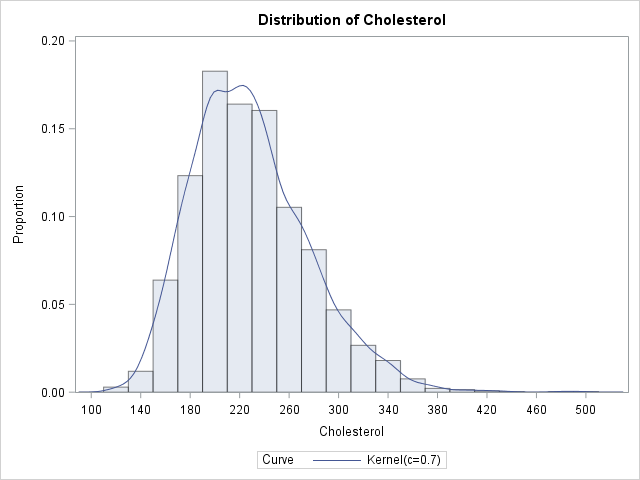
One of the joys of statistics is that you can often use different methods to estimate the same quantity. Last week I described how to compute a parametric density estimate for univariate data, and use the parameters estimates to compute the area under the probability density function (PDF). This article

The recent issue of InformationWeek features a Q&A session with Ken Thompson, one of the creators of the Unix operating system. (He collaborated with Dennis Ritchie, of C language fame. Since much of SAS is written in C, I daresay there are a few copies of K&R around here.) One

If you create a scatter plot of highly correlated data, you will see little more than a thin cloud of points. Small-scale relationships in the data might be masked by the correlation. For example, Luke Miller recently posted a scatter plot that compares the body temperature of snails when they
Here at SAS Press, we offer a strong, stable publishing team with over 55 years of combined experience. But as a potential author (or even current one) or fan of our press, you might want to get a better feel for the people behind the book. Thus a new feature,

In a previous article, I discussed random jittering as a technique to reduce overplotting in scatter plots. The example used data that are rounded to the nearest unit, although the idea applies equally well to ordinal data in general. The act of jittering (adding random noise to data) is a

Last week, I attended the International Center for Leadership in Education’s Model Schools Conference in Nashville, TN, where I learned about many forward-thinking education initiatives taking place across the country. My colleagues and I also had the privilege of facilitating a SAS(r) EVAAS for K-12 presentation from two principals at
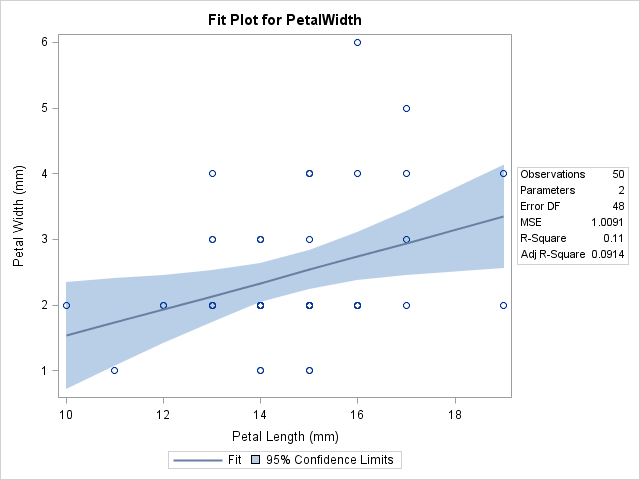
Jittering. To a statistician, it is more than what happens when you drink too much coffee. Jittering is the act of adding random noise to data in order to prevent overplotting in statistical graphs. Overplotting can occur when a continuous measurement is rounded to some convenient unit. This has the
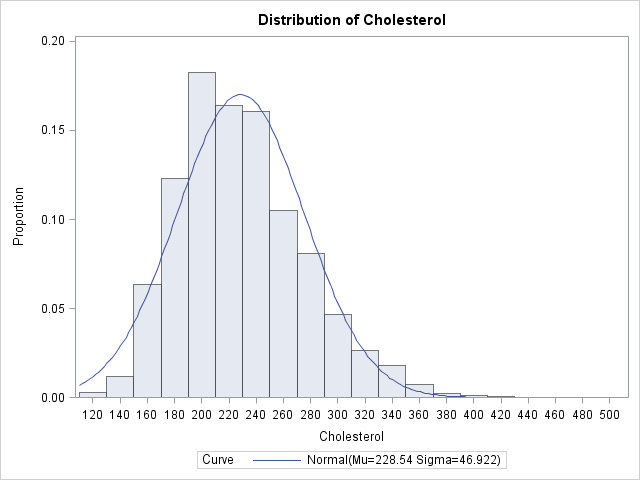
The area under a density estimate curve gives information about the probability that an event occurs. The simplest density estimate is a histogram, and last week I described a few ways to compute empirical estimates of probabilities from histograms and from the data themselves, including how to construct the empirical
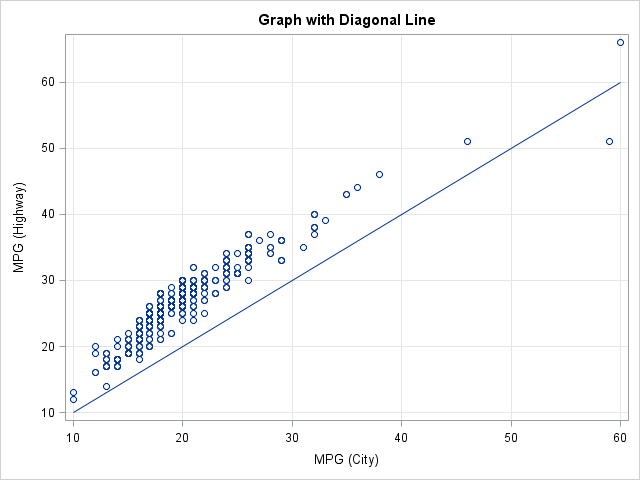
In my statistical analysis of coupons article, I presented a scatter plot that includes the identity line, y=x. This post describes how to write a general program that uses the SGPLOT procedure in SAS 9.2. By a "general program," I mean that the program produces the result based on the
In Base SAS you can use the DATASETS procedure to determine the SAS data sets in a library, and you can use the DELETE statement to delete data sets. Did you know that you can do the same operations from within the SAS/IML language? The following DATA step creates four

About a year ago (wow, has it been that long?), I posted an example program that lets you report on the contents of a SAS information map. Using my example, you can see the data items, filters, and folder structure within a given information map. Last week a reader posted
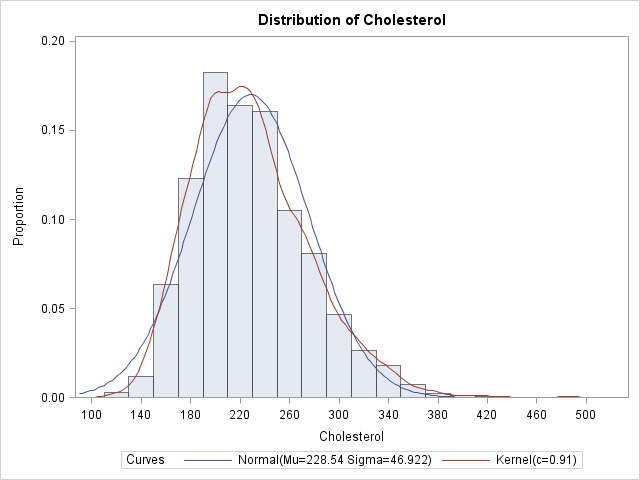
Readers' comments indicate that my previous blog article about computing the area under an ROC curve was helpful. Great! There is another common application of numerical integration: finding the area under a density estimation curve. This article provides an overview of density estimation and computes an empirical cumulative density function.

This is Part 4 of my response to Charlie Huang's interesting article titled Top 10 most powerful functions for PROC SQL. As I did for eaerlier topics, I will examine one of the "powerful" SQL functions that Charlie mentions and show how to do the same computation in SAS/IML software.

As far as numbers go, the number zero is rather mysterious for data. Is it something or is it nothing? What happens when you have missing data but enter 0? This topic triggered an intriguing discussion in my recent Programming 2: Data Manipulation Techniques class. In this post I’d like

We sometimes take it for granted, but the concept of the "SAS library" is just about one of the most awesome aspects of The SAS System. You can give your library a name (a library reference, or libref), tell the system how to get to your data (options on a
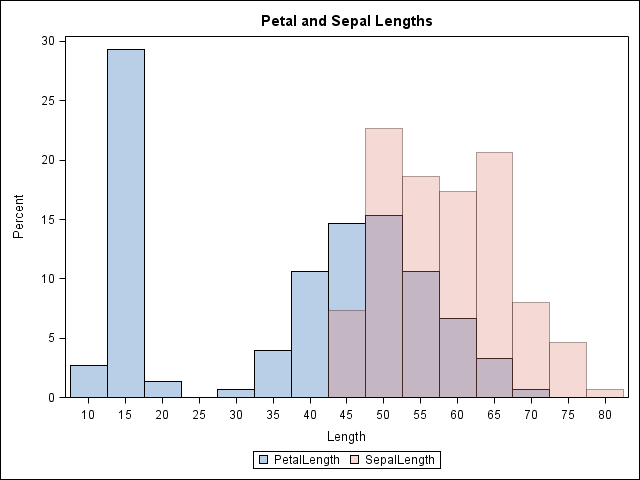
A reader commented to me that he wants to use the HISTOGRAM statement of the SGPLOT procedure to overlay two histograms on a single plot. He could do it, but unfortunately SAS was choosing a large bin width for one of the variables and a small bin width for the

Recently Charlie Huang showed how to use the SAS/IML language to compute an exponentially weighted moving average of some financial data. In the commentary to his analysis, he said: I found that if a matrix or a vector is declared with specified size before the computation step, the program’s efficiency

SAS-based processes are critical to many organizations, but sometimes the trickiest part of your job falls into one or both of these activities: Getting stuff from the outside world "into" SAS. (Once it's in SAS, as many of you know, the world is your oyster.) Getting the output of your
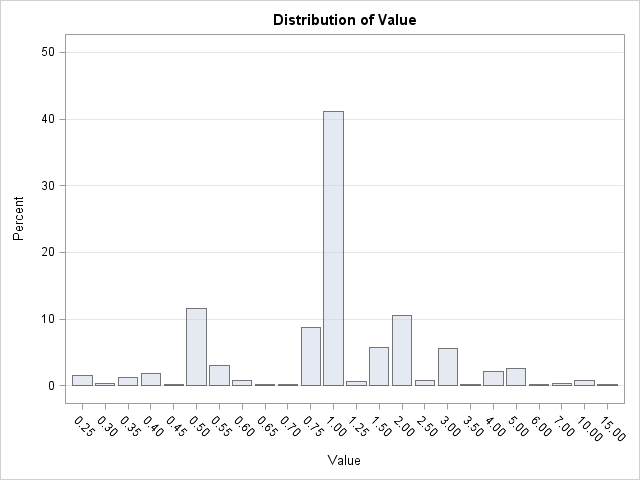
Each Sunday, my local paper has a starburst image on the front page that proclaims "Up to $169 in Coupons!" (The value changes from week to week.) One day I looked at the image and thought, "Does the paper hire someone to count the coupons? Is this claim a good
The 2011 Joint Statistical Meetings (JSM) will be from July 31-August 3 in Miami Beach. Look for acquisitions editor and SAS Press conference mega-maven Shelley Sessoms at the SAS Publishing booth (#504). Shelley can talk with you about: New and forthcoming statistics-related books from SAS Press, including Statistical Analysis for

A colleague asked, "How can I enumerate the levels of a categorical classification variable in SAS/IML software?" The variable was a character variable with n observations, but he wanted the following: A "look-up table" that contains the k (unique) levels of the variable. A vector with n elements that contains
Sometime very recently, probably while you weren't looking, I changed jobs at SAS (yes, again). This time it's a bigger change for me, because I'm no longer part of the SAS R&D organization, where I've worked for nearly 14 years. Instead, I'm part of the team known internally as Professional
Now that the flurry of SAS Global Forum 2011 in Las Vegas has died down, you can take a little time to catch up on some of the reading you said you'd get to. For instance, have you worked your way through the proceedings? They are located here. And I

My primary purpose in writing The DO Loop blog is to share what I know about statistical programming in general and about SAS programming in particular. But I also write the blog for various personal reasons, including the enjoyment of writing. The other day I encountered a concept on Ajay




